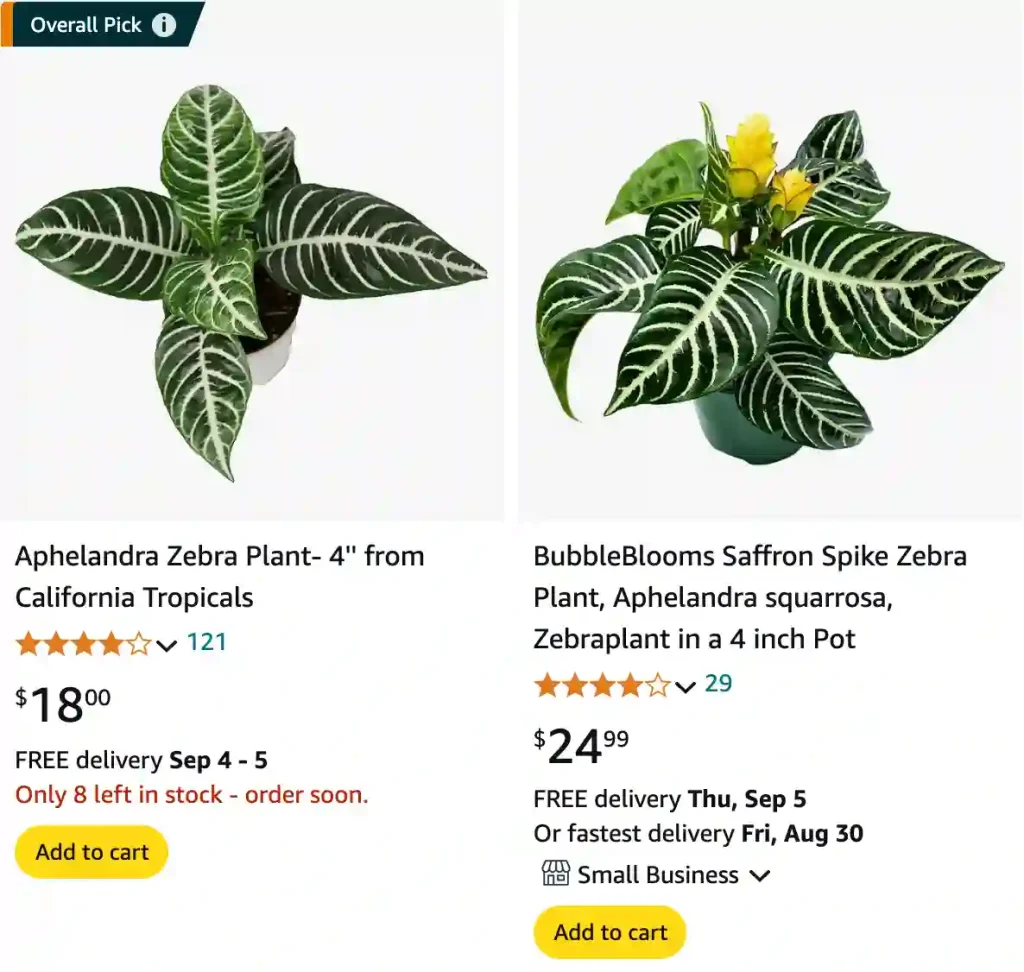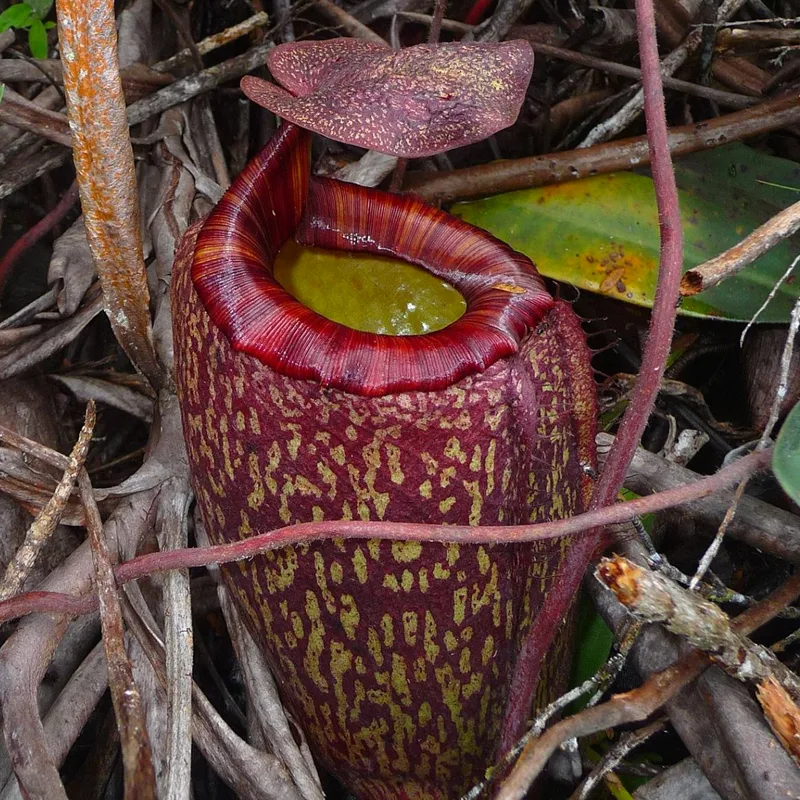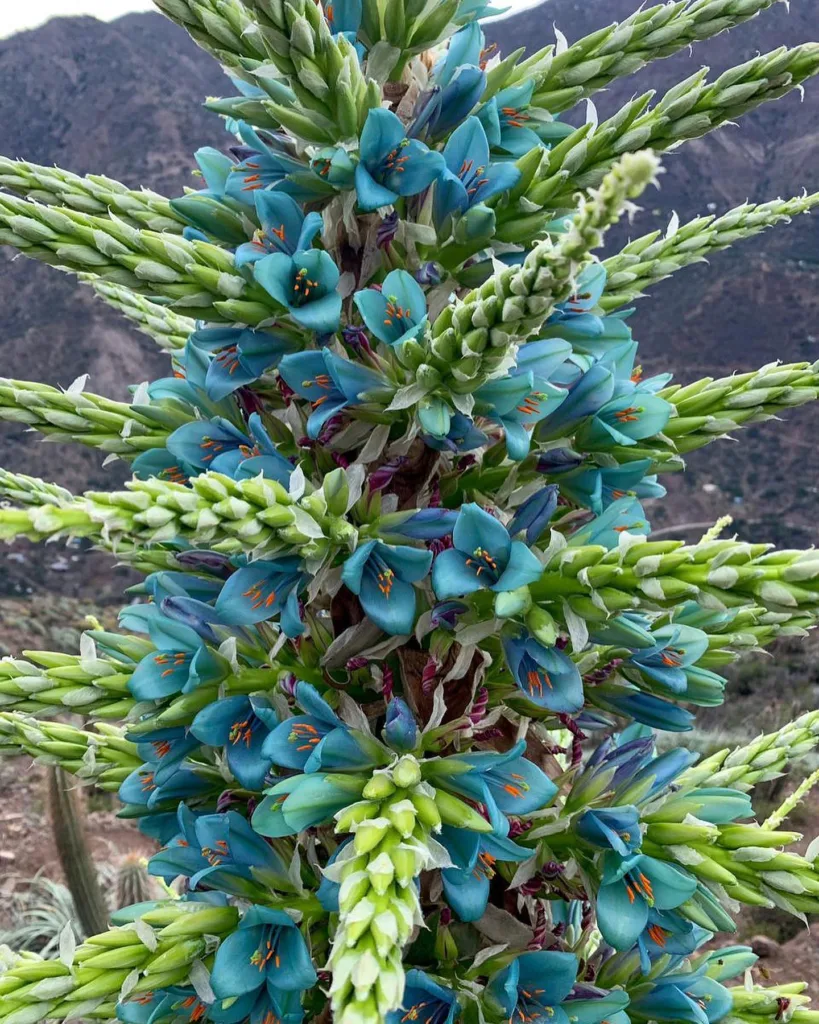
FAQs About Zebra Plant
The Zebra Plant, with its striking foliage, is a popular choice for indoor gardening enthusiasts. If you’re considering adding this plant to your collection or are already a proud owner, you might have some questions. Let me share my experience and knowledge to help you care for your Zebra Plant and address common concerns.
206 Species in Genus Aphelandra
How to Care for Zebra Plant?
Caring for a Zebra Plant (Aphelandra Squarrosa) involves a few key practices. First, ensure it receives bright, indirect light. Direct sunlight can scorch its leaves, while too little light can hinder its growth. The plant thrives in warm temperatures between 65°F and 75°F (18°C to 24°C).
Humidity is also crucial. Zebra Plants love a humid environment, so consider placing a humidifier nearby or setting the pot on a tray of wet pebbles. Regular misting can help maintain the necessary humidity levels.
When it comes to soil, a well-draining mix is ideal. I use a blend of potting soil with added perlite or sand to improve aeration. Fertilize monthly during the growing season (spring and summer) with a balanced, water-soluble fertilizer.
How Often to Water Zebra Plant?
Watering is one of the more delicate aspects of caring for a Zebra Plant. It’s essential to keep the soil consistently moist but not soggy. I usually water when the top inch of soil feels dry to the touch. Overwatering can lead to root rot, while underwatering can cause the plant to dry out.
Why Is My Zebra Plant Drooping?
If you notice your Zebra Plant drooping, it could be due to several factors. The most common cause is inconsistent watering. Both overwatering and underwatering can lead to drooping. Check the soil moisture and adjust your watering routine as needed.
Another possibility is low humidity. Zebra Plants require high humidity to thrive. If the air is too dry, especially in winter, the plant might droop. Increasing humidity levels can help restore the plant’s vitality.
How to Propagate Zebra Plant?
Propagating a Zebra Plant can be done through stem cuttings. Here’s a step-by-step guide based on my experience:
- Select a Healthy Stem: Choose a stem with at least two sets of leaves.
- Make the Cut: Using a clean, sharp knife or scissors, cut just below a leaf node.
- Prepare the Cutting: Remove the lower leaves to expose the node. Dip the cut end in rooting hormone if desired.
- Plant the Cutting: Insert the cutting into a pot filled with a well-draining potting mix. Water lightly.
- Create a Humid Environment: Cover the pot with a plastic bag or place it in a propagator to maintain high humidity.
- Wait for Roots: In a few weeks, the cutting should develop roots. Transplant it into a regular pot once roots are established.
Are Zebra Plants Toxic to Cats and Dogs?
Yes, Zebra Plants are toxic to cats and dogs if ingested. The plant contains compounds that can cause gastrointestinal upset, such as vomiting and diarrhea. If you have pets, it’s crucial to keep the plant out of their reach or choose pet-friendly alternatives.
Can Zebra Plant Grow in Water?
While Zebra Plants prefer soil, they can survive in water for a short period. If you want to try growing in water, ensure the plant’s base is submerged, but avoid letting the leaves touch the water to prevent rot. Regularly change the water and monitor the plant for signs of stress.
Zebra Plant vs. Aloe
Comparing Zebra Plants to Aloe Plants (Aloe vera) reveals some notable differences. Aloe Vera is a succulent, known for its thick, fleshy leaves and tolerance to drought. In contrast, Zebra Plants are not succulents and require consistent moisture and high humidity.
Aloe Vera is more forgiving in terms of light conditions, thriving in both bright and low-light environments. Zebra Plants, however, need bright, indirect light to perform well.
Common Problems with Zebra Plants
Aside from drooping, other issues include yellowing leaves, which can indicate overwatering or nutrient deficiencies. Pests like spider mites or aphids can also affect Zebra Plants. Regular inspection and maintaining proper care can help prevent these problems.
What to Plant with Zebra Plant?
Pairing Zebra Plants with other tropical plants can create a lush indoor garden. Consider companions like Philodendron, Bromeliads, or Peace Lilies. These plants have similar humidity and light requirements, making them ideal partners.
In summary, caring for a Zebra Plant involves providing proper light, humidity, and water, while being mindful of its toxicity to pets. With the right attention and care, this striking plant can be a beautiful and resilient addition to your indoor garden.
If i die, water my plants!



